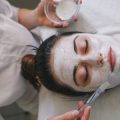Introduction to Chemical Peels
Chemical peels have steadily gained traction across the UK as a trusted solution for rejuvenating and refining the skin’s appearance. At their core, chemical peels are professional treatments designed to gently exfoliate the skin by applying a specially formulated solution that removes dead cells and encourages fresh, healthy skin to emerge. While there are various types of peels available, light and medium depth chemical peels have become especially popular in recent years. These options offer a balanced approach: they deliver noticeable results with minimal downtime, making them suitable for people leading busy lifestyles. Whether you’re looking to tackle fine lines, uneven texture, or pigmentation issues, understanding how these treatments work and why they are so widely embraced in the UK can help you make an informed decision about your skincare journey. With British clinics and practitioners upholding high standards of safety and professionalism, chemical peels have become a sought-after choice for those striving to achieve radiant, confident skin.
2. How Chemical Peels Work
Chemical peels, whether light or medium depth, rely on carefully formulated solutions to exfoliate and rejuvenate the skin. At their core, these treatments harness specific active ingredients that work with your skin’s natural renewal process, gently removing damaged outer layers to reveal a fresher complexion beneath. The science behind this process may sound complex, but it’s all about giving your skin a nudge towards radiance.
The Key Active Ingredients
Different types of chemical peels use distinct active components tailored to achieve varying depths of exfoliation. Here’s a straightforward comparison:
| Peel Type | Main Active Ingredients | Typical Effects |
|---|---|---|
| Light Peel | Alpha Hydroxy Acids (AHAs) e.g. Glycolic Acid, Lactic Acid | Brightening, smoothing texture, mild exfoliation |
| Medium Depth Peel | Trichloroacetic Acid (TCA), sometimes blended with AHAs or Jessner’s Solution | Tackling pigmentation, fine lines, more noticeable rejuvenation |
The Exfoliation Process Explained
When applied by a professional, the chosen peel solution interacts with the upper layers of your skin. Light peels target just the surface—think minor dullness or uneven tone—while medium depth peels reach deeper into the epidermis for more dramatic renewal. As the solution works, it loosens and removes dead skin cells, prompting your skin to naturally repair and regenerate itself. This process not only improves texture and clarity but also encourages collagen production over time.
Why This Matters for UK Skin Types
With our British climate—often cool and damp—skin can become lacklustre or prone to congestion. Chemical peels offer an effective way to counteract these effects without resorting to invasive procedures. By understanding how these treatments work at a scientific level, you’re better equipped to choose what suits your individual needs while prioritising safety and realistic expectations.

3. Assessing Suitability for British Skin Types
Chemical peels, particularly light and medium depth varieties, have become increasingly popular in the UK as a solution for improving skin texture, minimising fine lines, and addressing pigmentation concerns. However, determining whether these treatments are suitable for your unique British complexion requires careful consideration of several factors.
Understanding Common British Skin Concerns
The typical British climate—often cool and damp—can contribute to specific skin issues such as dryness, sensitivity, and rosacea. Additionally, many people in the UK have fair skin types (Fitzpatrick I-III), which may be more prone to redness or post-inflammatory hyperpigmentation following chemical procedures. Those with darker skin tones (Fitzpatrick IV-VI) must also exercise caution, as certain acids can trigger uneven pigmentation if not tailored to their needs.
Lifestyle and Environmental Considerations
Given the unpredictable British weather, it’s important to factor in the limited sunshine and prevalent cloud cover when planning a peel. While reduced sun exposure can lower the risk of post-peel pigmentation, it’s still essential to apply broad-spectrum SPF daily during recovery. For busy city dwellers or those with active lifestyles, light peels often offer minimal downtime and quick results, whereas medium depth peels may require a few days off work for optimal healing.
Key Questions Before Booking Your Peel
Ask yourself: Do you frequently experience sensitivity or flushing? Are you taking medications that could affect healing? Is your schedule flexible enough to accommodate potential peeling and redness? Consulting with a qualified practitioner who understands the nuances of British skin types is crucial—they can recommend formulations that align with your specific concerns and ensure safety at every step.
Ultimately, by taking into account your individual skin characteristics, common environmental factors in the UK, and your personal routine, you’ll be empowered to make an informed decision about whether a light or medium depth chemical peel is right for you.
4. Safety and Aftercare Essentials
When considering light and medium depth chemical peels in the UK, prioritising safety is not just wise—its essential for optimal results and peace of mind. Clinics across the country adhere to strict protocols, ensuring each procedure meets the highest standards set by governing bodies such as the Care Quality Commission (CQC) and the General Medical Council (GMC). Whether you’re new to peels or a seasoned skincare enthusiast, understanding these safety measures and how to care for your skin post-treatment can make all the difference in your experience.
UK Safety Protocols: What to Expect
| Protocol Step | Description | Why Its Important |
|---|---|---|
| Pre-Treatment Consultation | A thorough assessment of your skin type, medical history, and goals by a qualified practitioner. | Ensures suitability and minimises risk of adverse reactions. |
| Sterile Environment | Treatments are performed in clinically clean settings with sterilised instruments. | Reduces risk of infection or contamination. |
| Patch Testing | A small amount of peel solution may be applied prior to treatment day. | Identifies potential allergies or sensitivities before full application. |
| Informed Consent | You’ll receive clear information about the procedure, risks, and expected outcomes. | Empowers you to make an informed decision with confidence. |
| Qualified Practitioners Only | Treatments conducted by GMC-registered doctors, nurses, or trained aestheticians. | Guarantees expertise and professional accountability. |
Aftercare Tips: Nurturing Your Skin with Confidence and Care
Your skin will need extra TLC after a chemical peel. Here’s how you can protect your results while encouraging healthy recovery:
- Hydration is Key: Use a gentle, fragrance-free moisturiser to support skin barrier repair. Avoid harsh actives for at least one week post-peel.
- Sun Protection: The British weather may be unpredictable, but UVA/UVB rays still affect healing skin. Apply a broad-spectrum SPF 30+ daily—even on cloudy days—to prevent pigmentation changes.
- No Picking or Scrubbing: Allow peeling or flaking skin to shed naturally; resist the urge to exfoliate or pick, as this could cause scarring or infection.
- Avoid Heat and Sweat: For 48 hours post-peel, steer clear of saunas, steam rooms, intense exercise, and hot baths to minimise irritation.
- Follow Practitioner Advice: Adhere strictly to any personalised aftercare instructions provided by your clinic—it’s their expertise that ensures lasting results and safety.
A Gentle Reminder for Your Journey
Your commitment to aftercare is a vital act of self-respect and empowerment. Treat your skin with kindness during its recovery phase; this patience will reward you with radiant, healthy-looking results. If you ever feel uncertain or notice unexpected reactions, don’t hesitate to contact your practitioner—they’re there to guide you every step of the way. Remember: nurturing your confidence is just as important as nurturing your complexion.
5. Expected Results and Realistic Outcomes
When considering light and medium depth chemical peels, it’s essential to understand what results you can genuinely expect and how these treatments fit into everyday British life. Most clients notice a brighter, more even complexion, with fine lines softened and pigmentation reduced. However, let’s be realistic—while these peels offer visible improvements, they are not miraculous overnight fixes. For example, Sarah from Manchester shared that after her medium-depth peel, she saw a significant reduction in sunspots but still required a good concealer for particularly stubborn marks. Typically, light peels result in minimal downtime—think mild redness or flakiness lasting up to three days. Medium depth peels, on the other hand, may involve around a week of peeling and sensitivity; this is when many Brits find themselves embracing the cosy jumpers and working from home as their skin heals.
It’s important to maintain your results with diligent aftercare and sun protection—a crucial point given our famously unpredictable weather. Dr Rachel Evans, a London-based dermatologist, frequently reminds her patients that “consistency is key.” She tells the story of Tom, an avid cyclist from Bristol, who found that regular use of sunscreen and gentle moisturisers kept his results lasting well beyond his initial treatment. Remember: while you’ll enjoy smoother, fresher skin, ongoing care and perhaps maintenance peels every few months are part of the journey. The British approach tends to be refreshingly practical—clients value subtle enhancements over dramatic changes, aiming for healthy radiance rather than drastic transformation.
6. Choosing a Qualified Practitioner in the UK
When considering light or medium depth chemical peels, selecting the right practitioner is absolutely vital for both your safety and the quality of your results. In the UK, not all beauty professionals are equally qualified to perform these advanced skincare treatments, so it’s essential to do your homework before booking an appointment.
Understanding Professional Qualifications
Look for practitioners who hold relevant qualifications, such as Level 4 or above in aesthetic practice or beauty therapy, with specific training in chemical peels. Many reputable clinics will have their team’s credentials displayed openly—don’t hesitate to ask about their experience and certifications. The General Medical Council (GMC), Nursing and Midwifery Council (NMC), and the Joint Council for Cosmetic Practitioners (JCCP) set clear standards for practitioners offering cosmetic procedures in the UK. Verifying that your provider is registered with one of these bodies can give you extra peace of mind.
Checking Clinic Standards
It’s wise to ensure the clinic itself is CQC (Care Quality Commission) registered if it offers medical-grade procedures. Cleanliness, professionalism, and transparent aftercare protocols are non-negotiable markers of a trustworthy establishment.
Prioritising Consultation and Safety
A thorough consultation should always precede any chemical peel. A responsible practitioner will assess your skin type, discuss your medical history, explain realistic expectations, and talk you through possible side effects or complications. This collaborative approach ensures your treatment plan is tailored just for you—an essential step towards safe and satisfying results.
Emphasising Aftercare and Ongoing Support
The best practitioners won’t just send you on your way after your treatment; they’ll provide detailed aftercare advice and offer follow-up appointments if needed. This level of support helps reduce risks and maximises your skin’s healing process.
In summary, choosing a qualified practitioner in the UK isn’t just about ticking boxes—it’s about entrusting your skin to someone who values your wellbeing as much as you do. Take time to research, ask questions confidently, and always prioritise safety over convenience or cost.


